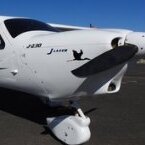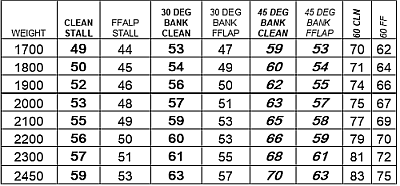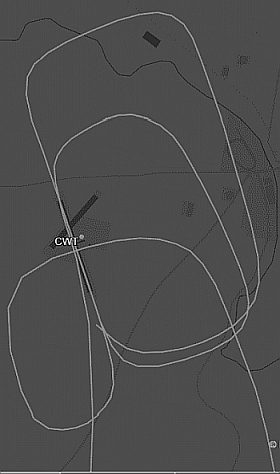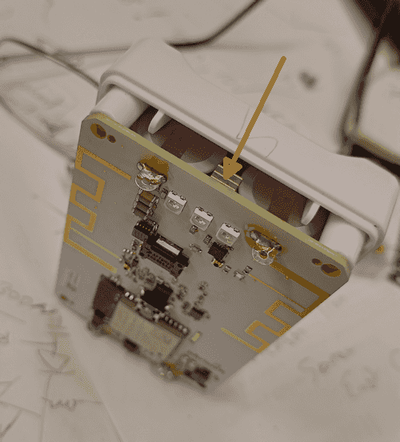-
Posts
3,326 -
Joined
-
Last visited
-
Days Won
39
Content Type
Profiles
Forums
Gallery
Downloads
Blogs
Events
Store
Aircraft
Resources
Tutorials
Articles
Classifieds
Movies
Books
Community Map
Quizzes
Everything posted by RFguy
-
Rotax specific : just be careful when choosing an oil cooler to not go too long and skinny (long in tube length) 'cause the suction tension gets too high (pressure drop) . With a new install, be sure to check the suction tension PER ROTAX MANUAL to be sure you are inside the max suck, otherwise your engine will starve.
-
One is in our hangar , will copy for you. although I think it is a /2 (smaller fuel tank) . just remmeber , legal requirement is the PoH for THAT airplane. (IE PoH is serial numbered) but reality might be different. have other doco- (maninenance and construction manual)
-
what does a 582 weigh with ALL accessories ? 100 lbs ? so this with all accessories is 125 lbs... too much. they call it a 582 replacement but that's alot of extra weight options ? https://www.aeromarine-lsa.com/vtwin/ https://bydanjohnson.com/four-stroke-power-for-light-sport-aircraft-aircraft-yes-a-modern-rotax-582-replacement/
-
yep. have messaged you, whole aircraft
-
I am going to have a look at it... just up the road
-
I made and printed this little placard for the Archer1. It lives on the back of the checklist A5 card. And knowing and speaking out the TO and landing weight ..and the TOSS is part of the start checklist. ...could miniaturize it and find a spot on the instrument panel I guess
-
AGreed. I have recommended the simple thing is just to charge at night and leave on all day.
-
That's really good point, and a real energy exchange equation that, if near the ground, you'd need to evaluate in milliseconds. IE nose down, get airspeed up, fly out of stall (altitude loss?) , or nose down (as required), instantaneous flap out , exchange some airspeed to operate 6 to 8 knots slower, perhaps ends up with less altitude lost? mmmmm sounds possible but critical... I will have to try this in the simulator...
-
but then it runs flat. The idea came from the need to have it in the club plane and it turn on and off, without adding to the checklist to turn it on and off . That aint usual checklist fodder. ALSO Very useful for instructors to look at the data of their solo pilots. (in addition to being visible in a busy environment)
-
https://en.wikipedia.org/wiki/British_European_Airways_Flight_548 wow that is quite a read. golly gosh !!!!
-
no, not unless you remove the power supply to the unit, then you have 15 minutes OTHERWISE the tiny PCB now gets bigger and needs some sort of flying sensor. Probably another wire off the board to a GPS data line. But now, the mods are increasing. Could put a chip accelerometer on the PCB I guess (3 x 3 mm) , and detect flight..... REMEMBER the SE2 is a poor man's transponder/ and conspicuity device. If you want the world, go buy a proper ADSB transponder.
-
I think the point I am trying to make is - the taught - " FULL POWER, FLY S&L, STOW FLAP, TRIM , , THEN CLIMB" --- sequence needs to have the STOW FLAP step NUANCED and discussed by the instructor. If a pilot just dumps all the flap on rote and the aircraft is barely flying - relying on ground effect to be flying, that will surely result in a LOC accident,.
-
I was thinking some more of this Nev Say..... HOT, WINDY, HEAVY that's a situation where airspeed is your friend and likely to better gain airspeed straight and level and gradually reduce flap until T.O.S.S for the situation is reached before climbing. comment ?
-
Hi Nev.. yeah, I would agree with that . Maybe I am over emphasising the change from full flap . If there is plenty of runway, I might slowly remove all the flap while flying S&L above the runway gaining airspeed, then progressively reduce flap until I am back to the T.O.S.S for nil flap. That's how I was taught, BTW . The other aspect is, that's when I have plenty of power in hand (only 1900 lbs out of the 2450 MTOW). May be better to inject airspeed when heavy, I will have to do some bulked landings at MTOW. My book doesnt have a proceedure for a baulked landing I'll look at a few other PA28 books. Important to accept what the book recommends and only modify a proceedure if its wrong/not fully relevant..
-
PA180-180A - If I dump from 40 deg flap in the Archer in the go around (say from baulked landing) , then I only go to 25 deg of flap in the go around- until I am well and truly estabilished on climb, and my brain has caught up with the airplane ..... situation understood, and flying in balance....... IE full power, trim, reduce from 40 to 25 flap when stabilized over run way, then climb, retrim to reduce stick pressure, stabilize, then reduce flap as required .... She climbs very well at 25 (which is the book specificed short field TO flap), no need to dump the whole lot (which reduces all sorts of margins) . This minimises the trim changes, gets altitude, and minimises airspeed requirements, since there is a hefty change in minimum flying speed going from 25 to 10. WOnt climb much faster than half way between Vx and Vy with 25 flap. You cant get much speed with 25 flap. From a baulked landing where you might be getting very slow in ground effect (so likely below book full flap stall) , there is no room for error at that juncture ! But that proceedure ----- NOT for HOT, WINDY, HEAVY. see below.
-
If Trig is transmitting ADS-B, SE2 should be set NOT to transmit ADS-B and be in a receive only mode, Which do you have ?
-
Yeah, it depends if the system maintains some memory and can execute a 'warm start' of the GPS without having to download the GPS info to start 3D fixing. Circuit for auto on and off from ship (charge) power : So, I made a circuit on Friday to turn on the SE2 on charge power applied (equivalent to 3 second press to alleviate any power application bounce) , and then on charge power remove (ship power off) , generates another 3 second push (which is power off). (1 x 74HC4538 + 2 x 1N914 diodes), and it is aware if it is on and off. Simple enough. On discussion with an esteemed colleague (Shane) He suggested on power removed, suggest run on time in case of emergency ops. So I will do something a little more elaborate and have power OFF occur 15 minutes AFTER charge power is removed. (comments pls?) Fortunately, the wire connections for this mod are really easy because it connects to the power end and the solder points to connect to are wide spaced and certainly not small. Ground, Battery, charge in, pushbutton sense. I will make kits.
-
Today, with SE2 sitting on the instrument panel, over in the middle of the PAX view (no pax) , facing FORWARDS (LEDs facing forward), performance seemed to be a little better in circuit- got better GPS fixes. smooth But I'd need to do a view times to get arguable data, today I also improved the ADSB receiver by reducing the gain a little more, - preventing receiver overload with planes outside the window. not so much cellular traffic now on the 3G (upload to flightaware) , sees up to 40nm on 200W Xponder (reduced)). But few other aircraft today- maybe half a dozen whole day!!!??. SE2 can take 10 minutes to show all greens after start. (hence aireborne when first fixes came in) . One NORMAL approach (15) and TWO glide (15,33).
-
but, ATC provides separation for IFR and VFR traffic for IFR traffic , that's their job (putting aside if all the planes had been equipped, then the two planes could have alerted their pilots without ATC)
-
system works. WHAT SHOULD have been done or could have been with the ADSB integration was a method to alert the pilot to pay attention - return Mode S. IE like Sellcall function for 2 way radios. something flashes and beeps. the system supports this in Mode S. I think my Garmin GTX335 does. Wonder what sort of device R75** was using ?
-
Skyecho has a very small and fairly compromised GPS antenna. However, up in the sky there are no trees. so as long as there isnt sheet of metal or inch thick fibreglass in the way , or any carbon fibre, should be fine. However, Mark I will give some thought to your suggestion of a coupled antenna, (even if technicially inept in your description). Amplified coupled antennas need to be considered and engineered very carefully to avoid accidently jamming the GPS for miles around (feedback) mmmmm for the moment, Just get it in the clear as best you can. But I would be sure the device's compromised antenna is one of the problems I am seeing.
-
" inductive passive GPS antenna "? what ? you mean coupled to the internal antenna without galvanic connection?
-
and any repair- consider what you do NOT want sucked down the pipe into your carburettor if it came loose.
-
wow that's nice and clean. Consult your LAME , L2 or A&P for info . dont worry about it. just ensure NOTHING is rubbing on it. It's not just random tube- it is high temperature, durable, expensive sh1t
-
yeah Mark but you have a fibreglass airplane.. It can likely see OK through the skins, (not carbon fibre though) but not through the wing structure... and of your OTHER airplanes, they all are low/mid wing and have a canopy, so good ! so for a J2XX on the fore end of the passenger window would be acceptable. J170 , J160 etc would really need to be on the instrument panel . Metal planes are a different beast. I have seen my SE2 generate bogus data with greens showing.









